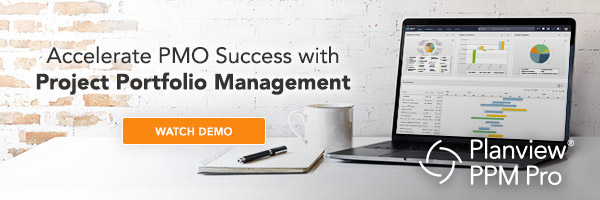
The following content is based on the whitepaper, “Bigger Than a Breadbox: 10 Tips for Better Project Estimates, Part 1,” written by Jerry Manas. For your reading convenience, we’ve decided to give it everlasting life here on the blog.
Much like a GPS uses satellite information on traffic patterns to calculate the remaining time on your trip, project estimation methods help you maintain a realistic project schedule. Contributor estimates, earned value, and earned schedules are all reinforced by Project Portfolio Management (PPM), which provides you with visibility throughout the entire organization and enables you to make more accurate plans. Guess you could say it’s the GPS of estimating.
Before reading ahead, we suggest you read up on the previous parts of this series, listed below:
- Part 1: Improve Project Estimates and Escape Crisis Mode
- Part 2: Improving Project Estimates is all About Direction
Tip 5: The GPS of Estimating
- Contributor estimates
Contributor Estimates are a crucial, but often overlooked, aspect of project estimates. Resources executing tasks on their timesheets can and should provide the “current remaining estimate” of tasks they’re responsible for each week. This keeps the project schedule accurate in terms of remaining time and reflects the ongoing viewpoint of the people executing the tasks. Likewise, project managers should stay in communication with resources and resource managers to ensure availability for upcoming work.
- Earned Value
From a cost and value perspective, some organizations use Earned Value as a gauge for what’s remaining on a project. The concept is to take the percentage of work completed times the overall budget to speculate how much relative “value” has been achieved so far, compared to the value expected by this point. Earned Value is also often used to predict what it’s going to cost to complete the remainder of the project (Estimate-to-Completion) and what the overall project will end up costing (Estimate-at-Completion). The correct way to employ Earned Value is to base the percent-complete progress on weighted milestones, as not all tasks are created equal. The key point to remember is that Earned Value is not about schedule, but rather about value and budget.
- Earned Schedule
There is a rarely used derivative form of Earned Value called Earned Schedule, which attempts to determine the difference between when value for a task was delivered vs. when it should have been delivered. The intended result is to better identify schedule variances in a time-based manner. Those who have used Earned Schedule claim it to be a valuable and effective approach to schedule management. Even so, this does not take the place of contributor estimates, and can be used in conjunction with that.
Where PPM Technology Fits In
Project Portfolio Management (PPM) solutions are used by many to address some of the project estimation challenges we’ve touched on in this series, and there’s a good reason for that. A good PPM application can go far to help you solve some of your problems, although as mentioned above, it should never be thought of as a replacement for the expertise and subjective opinions of SMEs and engaged project and resource managers.
But first: what’s a “good” PPM application?
First: they span the enterprise and gather data from every department, giving you visibility into what’s coming so you can really plan. That’s the good news—and the bad. If you (or those you’re working with) are still on spreadsheets or project-based, desktop apps, this means change. But the outcome will be worth it, both in stress and in value. Forrester calculated the ROI of PPM to be 255% for on-premise, 281% for SaaS, with payback within 12 months. Your mileage may vary, but it’s probably worthwhile to kick the tires.
Speaking of analysts: that’s one thing to check.
Forrester, Gartner, IDC, and others are good barometers of quality. As far as individual solution capabilities to look for, these are as varied as the organizations deploying the solutions—you’ll know what matters to you: ease of use, good analytics, visibility into capacity and demand, and the like. Insofar as cost issues are concerned, these can often be reduced by opting for a cloud-based deployment, assuming this is allowed by your organization.
If your company already has an enterprise PPM solution in place, you’re well ahead of the game in terms of budget and implementation. Now, what’s needed is an objective look at how the solution is being used and how it can be extended organizationally. Both involve some initial pain, but again, it’s worth it.
With all that in mind, let’s examine what to look for in a PPM solution and what it can do for you. When you’re addressing project estimation woes, the last thing you want to do is compound the problem. Some of the issues we’ve talked about so far in this series are:
- Using actuals to improve estimates. The use of actuals to improve the accuracy of estimates and the speed by which you can produce them should not be underestimated. The problem for most is getting their hands on the data. Without a closed-loop system like PPM that captures and stores the information—who did what, how long it took, what value it delivered, and at what cost—you’re often relying on memory.If the project in question was small and ended last week, great. Otherwise?
- Updating project schedules. The project schedule is a living thing that must reflect reality. A PPM solution can be of tremendous use here, not just sourcing the needed data, but automatically keeping all the various stakeholders—from resources to VPs—informed of milestones achievements, potential issues, and the like. This frees up project and resource managers from a lot of mindless tasks, eliminates the need for error-prone data roll-up work, and heads off many bottlenecks before they come to pass.
- Leveraging contributor estimates. While staying in close connection with resources on a project is critical, automating some of the more routine tasks can result in great benefits for all. One of the less strategic offerings of most PPM applications is timesheet entry, which allows project managers to stay on top of resources’ current remaining estimate of tasks they’re responsible for each week. This ensures that the project schedule is up to date in terms of remaining time, eliminating unwelcome surprises like missed milestones and resource unavailability.
- Employing traditional and Agile approaches strategically. Not just a buzzword anymore, Agile is recognized as an effective way for organizations to approach projects—some projects. But even organizations that embrace Agile know that the waterfall approach is right for other projects. So, when seeking out a PPM solution, look for an “ambidextrous” one that will work with both approaches interchangeably.
An enterprise PPM system can deliver much more; these are a few points as you consider your needs. To learn how Planview can help, visit www.planview.com and register for a free demo of the solution of your choosing.
Continue reading this seven-part series, listed below, where we will cover estimates and resource availability, management and contingency reserves, estimating mega-projects, using multi-point estimates, and reason why your projects are late:


![Fuel Decisions with Data by Making the PMO a Strategic Partner [Webinar]](https://blog.planview.com/wp-content/uploads/2018/09/Fuel-Decisions-with-Data-by-Making-the-PMO-a-Strategic-Partner.jpg)
![The Value of Combining Robust PPM with Lightweight Work Execution [Video]](https://blog.planview.com/wp-content/uploads/2018/03/Combining-Robust-PPM-with-Lightweight-Work-Execution.gif)


